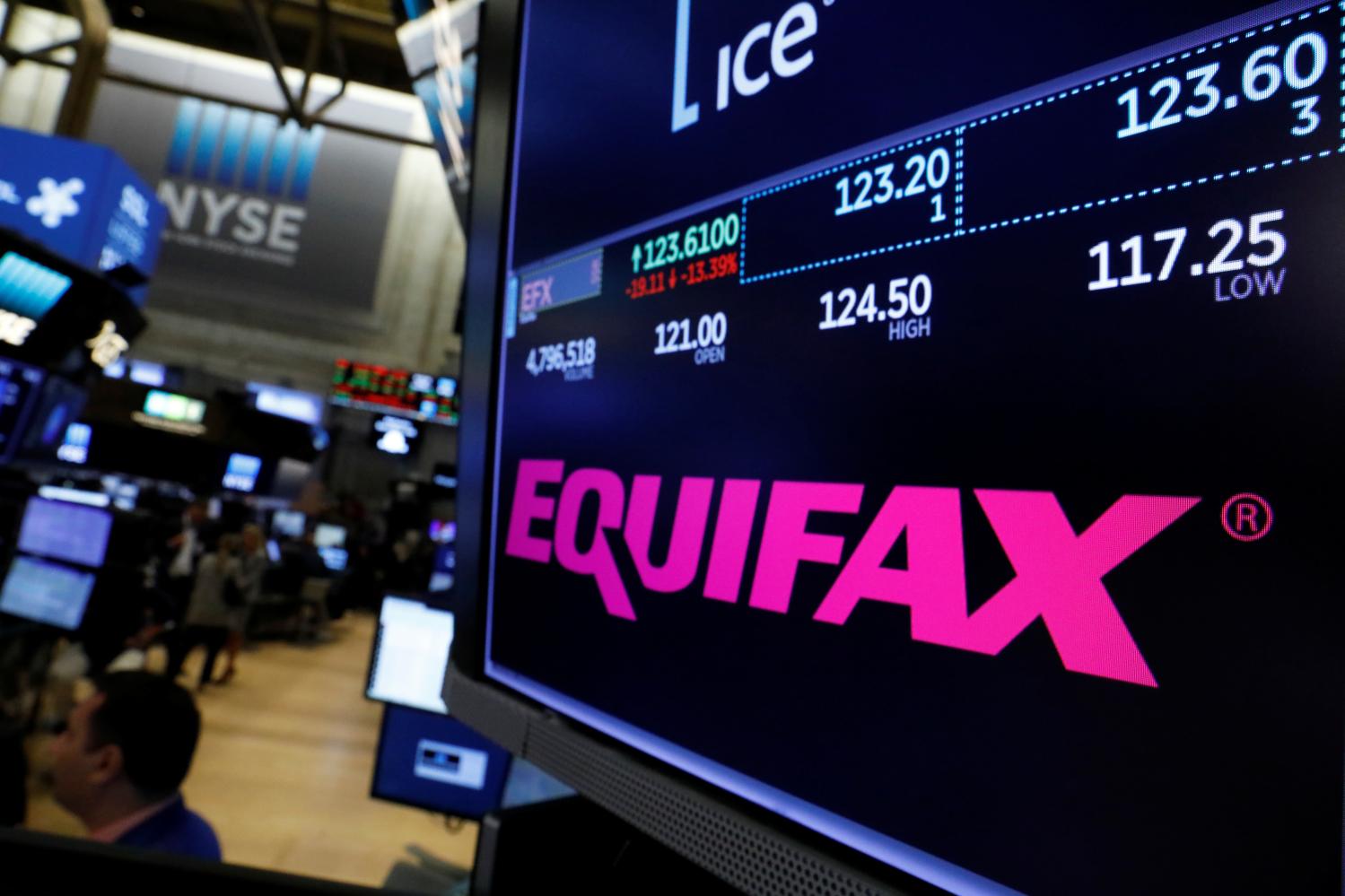This report is part of the Series on Financial Markets and Regulation and was produced by the Brookings Center on Regulation and Markets. It originally appeared in CNBC on September 27, 2017.
Your most personal information — home address, Social Security number, etc. — has likely been hacked as one of the 143 million American consumers whose Equifax credit files were breached. Equifax CEO Richard Smith resignation, potential illegal stock trades of senior executives, has drawn the attention of Congress with a Senate hearing scheduled.
Policy makers need to resist the headlines and focus on the real problem that directly harms millions of Americans: the astounding number of errors in the credit reports that are the result of misaligned economic and legal incentives.
More than one in five consumers have a “potentially material error” in their credit file that makes them look riskier than they are. Lenders respond to this incorrect data by offering you higher interest rates, less favorable terms, or denying credit if the error makes you look too risky.
With money on the line, you might assume that the credit reporting system would fix the problem. In reality, it is the opposite. Speed and volume are favored over accuracy. Large-scale inaccuracies are tolerated. The costs of correcting the data outweigh benefits — for the credit bureaus, though, not the consumers.
Equifax collects information from banks, mortgage servicers, debt collectors and other credit providers and sells raw data back to potential lenders. The data in your credit reports are aggregated into a single credit score (e.g. FICO score) which are widely used to determine if you qualify for a loan and if so, at what interest rate.
Given the importance of credit scores, why are they so inaccurate? Three reasons: size, speed, and economic incentives of the system. Each of the major bureaus has over 200 million credit files that, on average, contain 13 past and current credit obligations, resulting in 2.6 billion pieces of data. Each month, more than 1 billion pieces of data are updated, requiring a speedy system. With so much data coming from so many sources, so quickly, errors are inevitable (especially if you have a common name).
More than one in five consumers have a “potentially material error” in their credit file that makes them look riskier than they are.
Errors also arise because credit furnishers do not have sufficient incentives to provide the most accurate data. Half or more of medical bills have a billing error, according to research from NerdWallet. Debt that has been sold to third party collectors may never get properly accounted for even when paid.
Equifax is not responsible for the accuracy of your credit report; you are. If you don’t know your credit report, how do you know there is a mistake? After years of fighting, Congress finally required credit bureaus to make credit reports free to consumers once a year. Uptake is strong, as 40 million consumers obtain at least one credit report annually, although not always for free.
When they get their report and see errors, consumers act. Eight million times a year, consumers contacted one of the big three credit reporting agencies to dispute information. Yet the dispute system is not designed to get to fix the problem. The credit bureau is only legally required to check with the creditor or debt collector and ask them whether they stand by their claim. As long as the creditor says you owe money, the dispute is resolved in their favor. As the National Consumer Law Center concludes: “Credit bureaus have little economic incentive to conduct proper disputes or improve their investigations.”
So why doesn’t someone form a new credit bureau that would compete on better information? There is a large value of incumbency. Existing lenders tend to use existing, trusted data furnishers. Credit reporting and collecting is a large-scale industry that requires both large operations and a long-time horizon of data.
Lenders, especially the largest ones, have their own data and proprietary models, which they believe allow them to improve on the credit reports and make better credit decisions. Thus, they have less incentive to pay the higher fees that would be required to improve the underlying data.
This leads to a suboptimal world. Consider a credit file with a huge, but inaccurate red flag of a default. Imagine that only one lender knows that this default is inaccurate. That consumer would then be dependent on that one lender, who has the right information. Do you think that consumer would be able to shop for a good rate?
Given these problems, it is not surprising that credit reports are a major source of consumer complaint. Credit reporting is the second most frequent source of consumer complaints handled by the Consumer Financial Protection Bureau, trailing only debt collection. The top two sources of those complaints were: incorrect information on a credit report (74 percent) or regarding the credit reporting company’s investigation of a complaint (11 percent).
The Equifax data breach provides a key moment for the public and policy makers to focus on the problems as three-quarters of the public recently told pollsters from Morning Consult that they favored new law or regulation to deal with credit bureaus, which is hardly a surprise given the problems described. Here are three simple solutions that would improve the situation:
Change the liability structure for inaccurate data. Right now, no one is on the hook if there is incorrect information. The law only requires that the credit bureau check with the provider of the information that there is a claim. Penalize those who repeatedly provide inaccurate information. This would require actual investigations and would be expensive to conduct on all eight million complaints, so use a random sample. Even if only 5 or 10 percent of complaints were investigated, the threat of an investigation and the penalties from providing inaccurate information would incentivize data providers to clean up their act. And for those number of consumers who try to dispute everything, hoping to wipe out legitimate debts apply penalties to consumers and sham credit-repair businesses that make incorrect appeals. The investigations can be paid for though a combination of fees and penalties for chronic misreporters of information, with some seed funding from the credit bureaus. No taxpayer dollars would be needed.
Credit reports should be proactively made available to all consumers on a free, annual basis. If the system is still going to rely on consumers to identify errors, the system needs to provide that information more easily and freely to consumers. Whether mailed or emailed, credit bureaus know where you live and should send you the information. This would also help solve a real and likely growing problem of consumers who can not access their credit reports because of security freezes or other mismatched personal information which blocks them from obtaining the online version.
Embrace the world of big data and financial technology to lower the barriers to entry and increase competition. Increase the types of information that credit reports contain and that credit scores use, to include important information such as rent and utility payments, or regular remittances sent to family, that provide important information about credit worthiness. The existing big three benefit from industry standards that lower the cost of credit for those who use them and raise the cost for those that use newer issuers. Policy makers need to actively promote competition by creating pilot programs with regulatory safe harbors, or limited guarantees for financing that utilizes alternative credit reports and data. Absent more competition and innovation, calls to nationalize credit reporting may continue to grow, taking down a path that historically leads to less innovation and even worse efficiencies.
As the World Bank concludes: “Credit reporting systems should effectively support the sound and fair extension of credit in an economy as the foundation for robust and competitive credit markets. In doing so, credit-reporting systems should be safe and efficient and fully supportive of data subjects and consumer rights.” But, the value of this service is in direct proportion to the accuracy of the data it provides. Let’s fill this breach with higher quality data going forward so that credit can better flow to those who need it and can use it responsibly.




